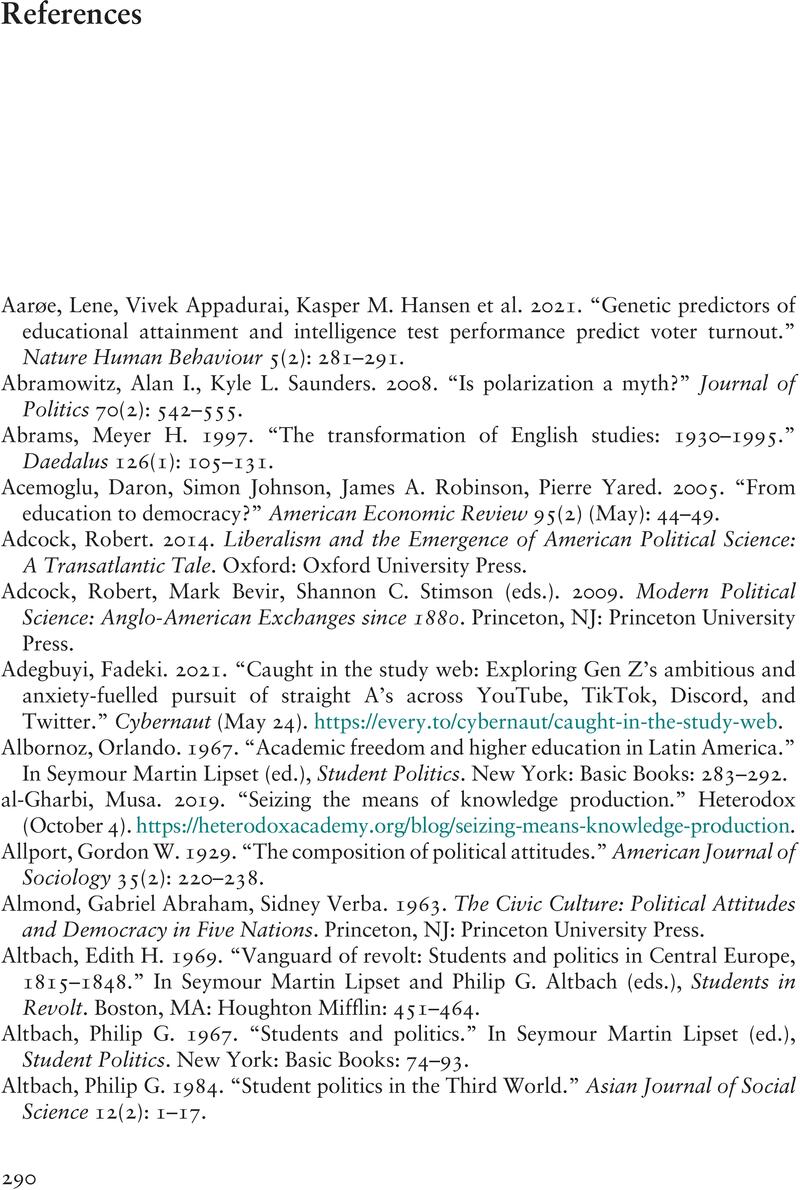References
Published online by Cambridge University Press: 28 February 2024
Summary

- Type
- Chapter
- Information
- A Liberal EducationThe Social and Political Impact of the Modern University, pp. 290 - 331Publisher: Cambridge University PressPrint publication year: 2024

